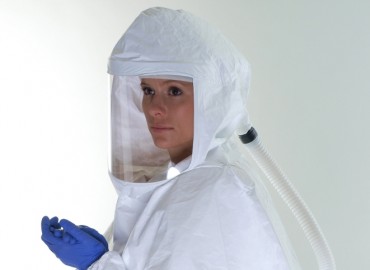GERMANTOWN, Md., Jun. 4 (Korea Bizwire) — Neuralstem, Inc. (Nasdaq:CUR), a biopharmaceutical company developing novel treatments for nervous system diseases, today announced the results from a study published in the journal Cell Stem Cell that support the potential of transplanted NSI-566, a human spinal cord-derived neural stem cell line (HSSC) to benefit patients with chronic spinal cord injury (SCI). The publication can be found here.
The manuscript entitled “A First-in-Human, Phase I Study of Neural Stem Cell Transplantation for Chronic Spinal Cord Injury” has as senior author Study Principal Investigator Joseph D. Ciacci, MD, Chief of Neurosurgery at the VA San Diego Healthcare System and Professor of Surgery at UC San Diego Health. The study’s primary objective was to evaluate the safety of NSI-566 transplantation in subjects with stable thoracic spinal cord injury, but additional endpoints were also measured including changes in neurologic deficits, neurophysiology, and neuropathic pain.
Subjects were evaluated for at least 18 months and up to 27 months after implantation of neural stem cells and showed no evidence of serious adverse events, suggesting the procedure is well-tolerated. Analysis of motor and sensory function and electrophysiology results showed improvement in three of the four patients after NSI-566 transplantation,
“Stem cell therapies have tremendous potential in addressing spinal cord injury, a condition for which there are currently no treatment options that can restore lost function,” said Dr. Ciacci. “This study serves as a step in this direction, as it suggests the procedure is safe and has the potential for benefitting the patient.”
Neuralstem has initiated the second cohort trial to test safety in patients with cervical spinal cord injury patients. “These data are encouraging and suggest that human spinal cord-derived neural stem cells may provide functional benefit to patients with spinal cord injury,” said Rich Daly, Neuralstem’s Chief Executive Officer. “We look forward to seeing the impact of this procedure on subjects with cervical injuries, who are the basis for the second cohort of the trial.”
About Spinal Cord Injury
A spinal cord injury, or SCI, generally refers to any injury to the spinal cord that is caused by trauma instead of disease although in some cases, it can be the result of diseases. It is estimated that there are 12,500 new cases of SCI per year and that at any given time, there are between 240,000 and 337,000 people in the United States that are living with SCI. Chronic spinal cord injury (cSCI) generally refers to the phase beginning 6 months after the initial injury. SCIs are most often traumatic, caused by lateral bending, dislocation, rotation, axial loading, and hyperflexion or hyperextension of the cord or cauda equina. Motor vehicle accidents are the most common cause of SCIs, while other causes include falls, work-related accidents, sports injuries, and penetrations such as stab or gunshot wounds. In certain instances, SCIs can also be of a non-traumatic origin, as in the case of cancer, infection, intervertebral disc disease, vertebral injury and spinal cord vascular disease.
About Neuralstem
Neuralstem is a clinical-stage biopharmaceutical company developing novel treatments for nervous system diseases of high unmet medical need. The Company has two lead development candidates:
• NSI-189, is a small molecule in clinical development for major depressive disorder and in preclinical development for Angelman syndrome, irradiation-induced cognitive impairment, Type 1 and Type 2 diabetes, and stroke.
• NSI-566 is a stem cell therapy being tested for treatment of paralysis in stroke, Amyotrophic Lateral Sclerosis (ALS), chronic spinal cord injury (cSCI), and traumatic brain injury (TBI). NSI-566 was shown to have restorative function in primate paralysis model. Highlights of this study were published in the peer reviewed journal, Nature, and the full manuscript can be found here.
Neuralstem’s diversified portfolio of product candidates is based on its proprietary neural stem cell technology.
Cautionary Statement Regarding Forward Looking Information
This news release contains “forward-looking statements” made pursuant to the “safe harbor” provisions of the Private Securities Litigation Reform Act of 1995. Such forward-looking statements relate to future, not past, events and may often be identified by words such as “expect,” “anticipate,” “intend,” “plan,” “believe,” “seek” or “will.” Forward-looking statements by their nature address matters that are, to different degrees, uncertain. Specific risks and uncertainties that could cause our actual results to differ materially from those expressed in our forward-looking statements include risks inherent in the development and commercialization of potential products, uncertainty of clinical trial results or regulatory approvals or clearances, need for future capital, dependence upon collaborators and maintenance of our intellectual property rights. Actual results may differ materially from the results anticipated in these forward-looking statements. Additional information on potential factors that could affect our results and other risks and uncertainties are detailed from time to time in Neuralstem’s periodic reports, including the Annual Report on Form 10-K for the year ended December 31, 2017 filed with the Securities and Exchange Commission (SEC), and in other reports filed with the SEC. We do not assume any obligation to update any forward-looking statements.
Contact:
Kimberly Minarovich
Argot Partners (Investor Relations)
212-600-1902
neuralstem@argotpartners.com
Source: Neuralstem, Inc. via GLOBE NEWSWIRE








